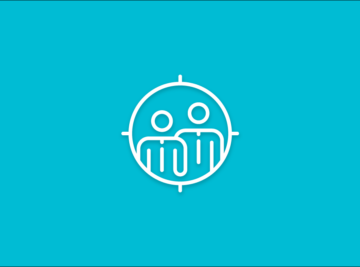We’re in a brave new world when it comes to sales. Cold calling is dead (Hallelujah!). We’ve got a new process, new alignment with marketing, and new tools that all help inform us and keep us moving forward to new revenue.
But in this brave new world, you might be surprised to hear that old-school sales techniques are still in use. Sure, some of it is coming from veterans who haven’t wanted to adapt, but a lot of it is coming from novices have no reason to cling to the old ways. They’re using the techniques for one reason: Because they work. But just because they work doesn’t mean that you should be relying on these old-school techniques to win deals.
Here is a look at 3 old-school sales closing techniques and why they continue to work, despite the changes that we’ve seen in the sales landscape.
1. The Foot-in-the-door
This sales tactic goes all the way back to the day or traveling salesmen, who would go door to door selling their wares. Because they so often got the door slammed in their faces, they realized that they could keep the door open (and therefor, keep selling) if they put their foot just inside the doorjamb.
No amount of door slamming could keep them from finishing their pitch! (Let’s just hope they had sturdy shoes.) The longer they were able to continue their pitch, the greater the chance that the person would make a purchase.
Today, the tactic has shifted a lot. It’s no longer about trying to keep a physical door open: Instead, it’s about opening a metaphorical door by getting a lead to agree to something small (say, signing up for a free trial, or listening to a pitch). If a salesperson can get a prospect to agree to something small, it increases the likelihood that they’ll do something big later on. (The science bears this out.)
Okay, so it works. Does that mean that you should embrace the foot-in-the-door technique? Yes and no. If you are already working with a targeted list of leads that you or your marketing team has generated according to the inbound methodology, then sure, go for it. Because the leads have already expressed interest in what your company does, then a free trial might actually be exactly what they’re looking for.
But if you are buying email lists, you may as well be going door to door selling your product. You’re shooting blind. Why would you want to sell to someone who has never expressed interest in your company or product if you could be selling to someone who is actively engaged?
2. The “Now or Never”
This sales tactic is a pretty standard one, and it’s pretty straightforward. It entails a salesperson either making an offer than requires immediate purchase from the buyer (“We can offer a 15 percent discount to people who buy today!”).
The magic behind this closing technique is that it pressures a lead into making a decision; hopefully that decision will be to buy. By implying that the buyer could miss out by waiting, it triggers a stress reaction similar to any other stressor in nature. And of course the idea of saving money is always a nudge in the right direction.
But just because this works in the short turn doesn’t make it a viable long-term selling strategy. Anytime that you are offering discounts or add-ons for free is a time that you’re missing out on revenue. What’s more beneficial: Selling to someone who only sort of wants your product, but agrees to it because you’re offering a discount, or selling to someone who is really excited about your product and is willing to pay the full price?
By focusing your efforts on people who are the right fit for your products and services, instead of trying to appeal to bargain hunters, you can make more money off of each sale, becoming more successful in the long run.
3. The “Stock-is-running-out”
This is also called the “scarcity” method of selling. In short, it implies that there is a limited supply of a product available, so if a buyer doesn’t act now, they might miss out on the chance entirely. “We’ve only got three more in stock!” or “After this batch is gone, you’ll have to wait another three months until we have more” are common indicators that this sales tactic is in use.
Why does this work? Because humans have been hard-wired by evolution to not want to miss out on things; that’s how we survived ice ages, famines, etc. We are programmed to want something, especially if it is soon going to go away—it’s just how we’re built.
By telling your buyers that they may soon be unable to purchase something, you trigger a stress reaction in them. This stress is likely to make them immediately buy from you so that they don’t miss out (a win!). But even if they don’t buy right away, they will be left wondering: Did I miss out? Can I still go back and buy one before it’s too late? And this makes it more likely that they’ll return to you for a sale later on, even if they didn’t buy right away.
But once you have earned the reputation of being a salesperson who relies on stress and manipulation to close sales, it can be really hard to come back from it. In today’s world, people talk to each other (thanks, social media!), and it’s really easy to find yourself with a reputation that makes it difficult to win deals.
Instead of relying on trickery and stress-inducement, your focus should instead be on working with buyers who are interested in your products and who you are sure that you can offer value to.
The New Way to Do Things
These old-school sales tactics still work in today’s world, but not because they’re good techniques: They work because they rely on manipulating your prospects into making a sale. By toying with their psychology and playing to their fears, you can definitely increase the odds of closing a sale. But that doesn’t make you a very good sales person, and you could certainly be doing your job in a more efficient, effective, and more “fair” way.
Instead of using these sleazy methods, you can have just as much success (more, even!) by relying on the inbound methodology to find, nurture, and sell to leads. By aligning your sales and marketing teams you can increase the quality of you leads and ensure that you’re only selling to people who are already interested in your products and services, which really removes the need to fall back on these old-school methods.









